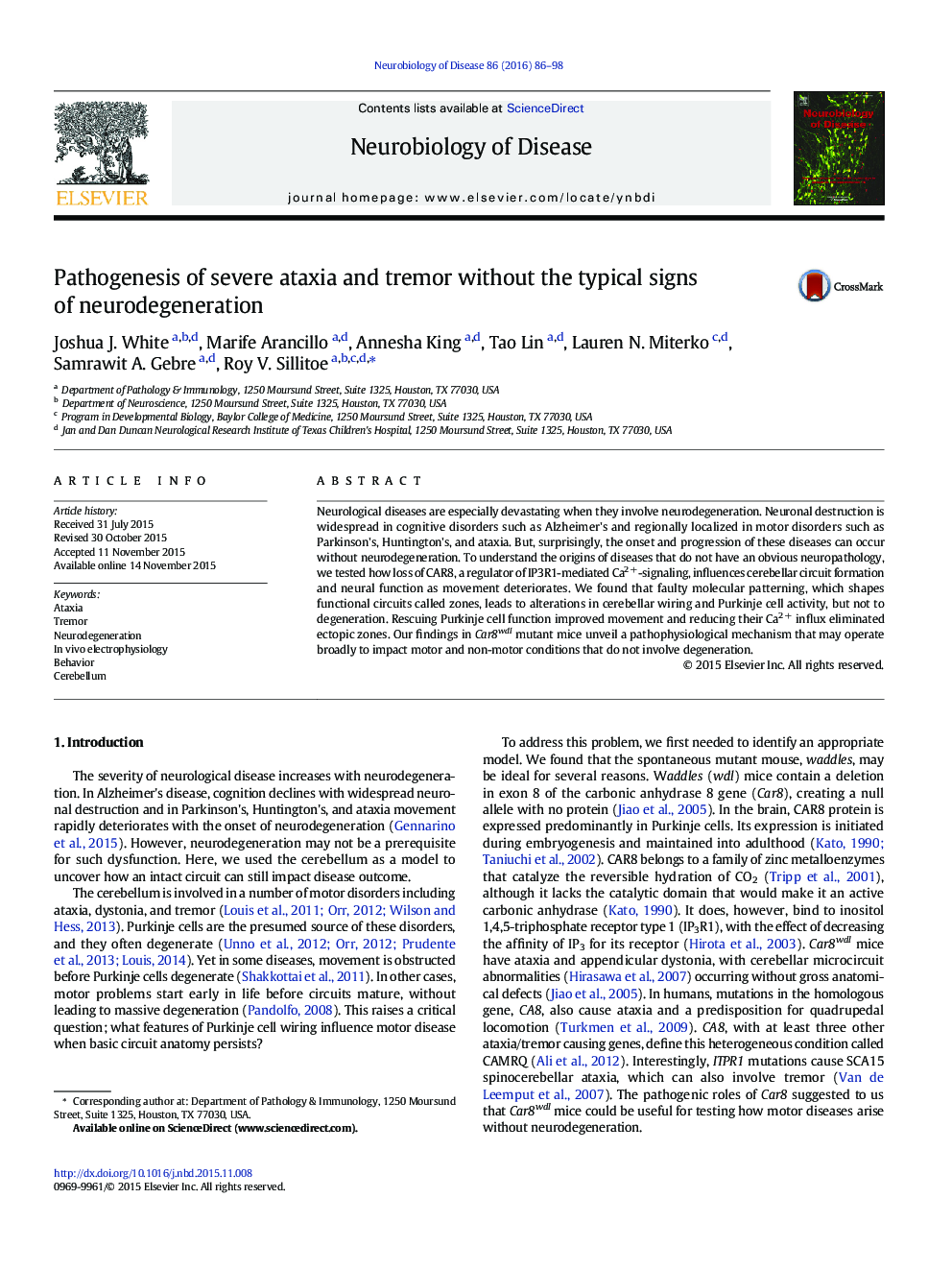| Article ID | Journal | Published Year | Pages | File Type |
|---|---|---|---|---|
| 6021452 | Neurobiology of Disease | 2016 | 13 Pages |
â¢Car8wdl mice exhibit ataxia and key physiological features of essential tremorâ¢Motor dysfunction in Car8wdl mice progresses without typical signs of degenerationâ¢Circuit wiring and neuronal activity determine the Car8wdl mutant phenotypeâ¢Cerebellar zone defects may reflect a cryptic code for neurological decline with age
Neurological diseases are especially devastating when they involve neurodegeneration. Neuronal destruction is widespread in cognitive disorders such as Alzheimer's and regionally localized in motor disorders such as Parkinson's, Huntington's, and ataxia. But, surprisingly, the onset and progression of these diseases can occur without neurodegeneration. To understand the origins of diseases that do not have an obvious neuropathology, we tested how loss of CAR8, a regulator of IP3R1-mediated Ca2Â +-signaling, influences cerebellar circuit formation and neural function as movement deteriorates. We found that faulty molecular patterning, which shapes functional circuits called zones, leads to alterations in cerebellar wiring and Purkinje cell activity, but not to degeneration. Rescuing Purkinje cell function improved movement and reducing their Ca2Â + influx eliminated ectopic zones. Our findings in Car8wdl mutant mice unveil a pathophysiological mechanism that may operate broadly to impact motor and non-motor conditions that do not involve degeneration.
